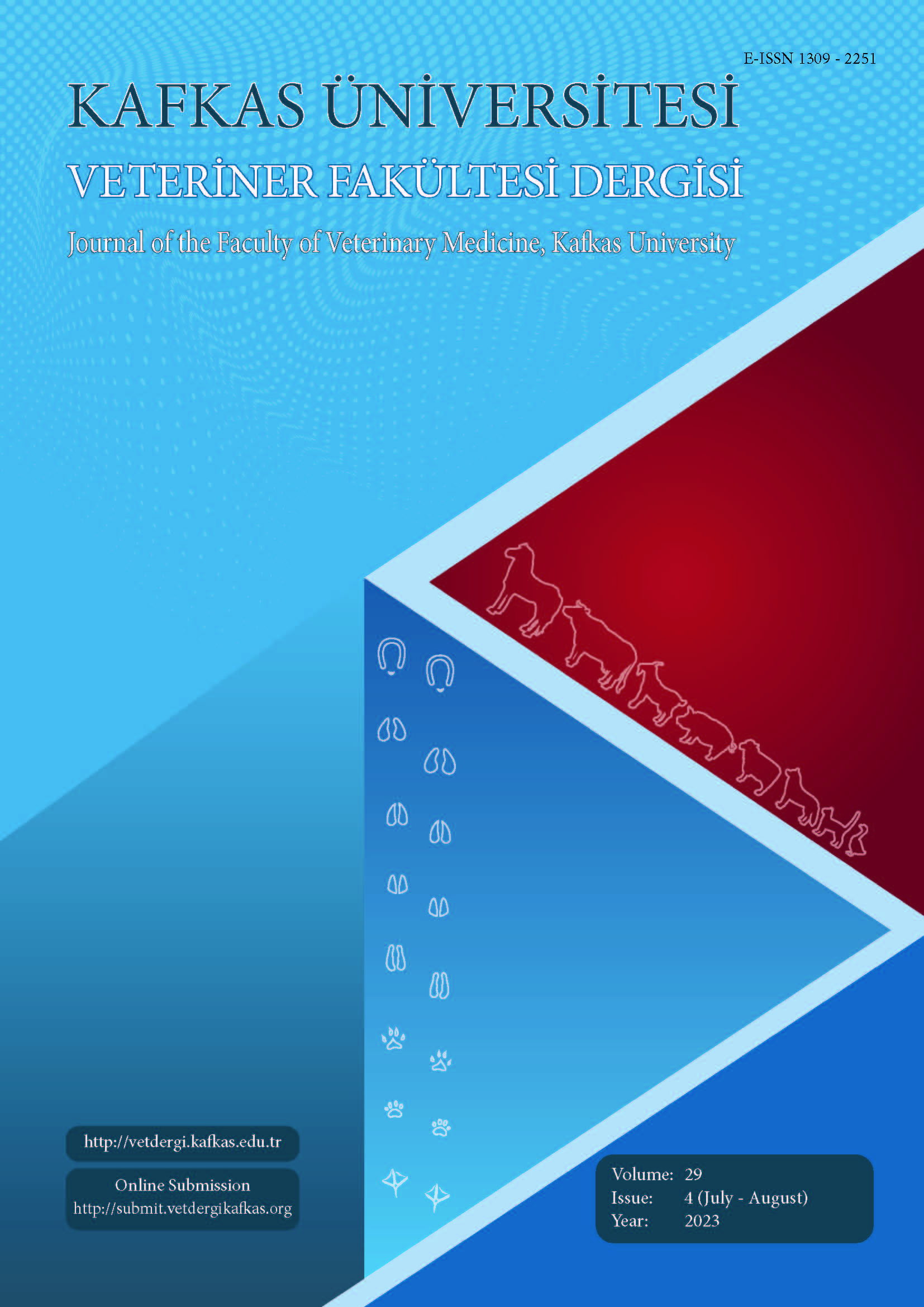
This journal is licensed under a Creative Commons Attribution-NonCommercial 4.0 International License
Kafkas Üniversitesi Veteriner Fakültesi Dergisi
2023 , Vol 29 , Issue 4
Stereological, Embryological and Histomorphometric Studies on Embryonic Development of Cerebellum and Cerebellar Purkinje Cells in Chicks
1Karamanaoglu Mehmetbey University, Faculty of Health Sciences, Department of Physiotherapy and Rehabilitation, TR- 70200 Karaman - TÜRKİYE2Karamanoglu Mehmetbey University, Faculty of Health Sciences, Department of Nutrition and Dietetics, TR-70200 Karaman - TÜRKİYE DOI : 10.9775/kvfd.2023.29205 The cerebellum which is widely used in studies related to the motor system is responsible for maintaining balance, muscle tone and coordination. In present study, we aimed to evaluate the cerebellum at different incubation periods in terms of stereology, embryology and histomorphometry. Twenty-four Babcock White Leghorn chick embryos were used. All data regarding embryo, egg and cerebellum were measured and calculated. All histologic and histomorphometric examinations were evaluated on the preparations stained with Crossmon"s trichrome stain, Kluver-Barrera stain, and silver stain. It was determined that the cerebellum weight, which was 0.0191±0.0064 g on the 10th day of incubation, increased gradually towards to hatching day. On the 10th day, it was seen that a four-layered primitive substantia grisea structure began to form. While primary foliation seen on the 10th day, secondary foliation started on the 13th day. On the 16th day, Purkinje cells forming the stratum gangliosum were arranged almost in a single row. At day 21th, the general structure of the cerebellum was almost similar to that of the adult cerebellum. While the stratum moleculare and granulosum thicknesses were measured in all embryonic periods, the stratum gangliosum thickness could be measured on the 16th and hatching days. As a result, it was thought that the data obtained from this study might be a reference for studies on the cerebellum and especially on motor control disorders. Keywords : Cerebellum, Cerebellar Purkinje cell, Chick embryo, Embryonic development










